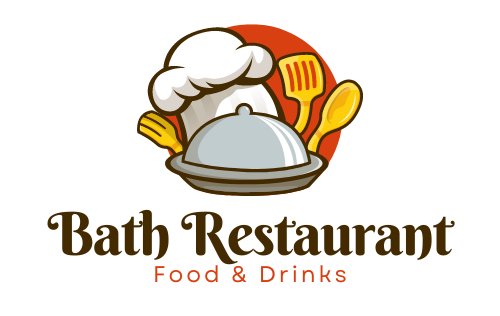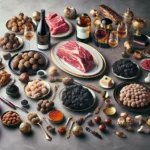Preserving Delicacies: Exploring Centuries-old Techniques
Preserving delicacies is an art that has been passed down through generations, with centuries-old techniques still playing a vital role in the culinary world today. The traditional methods of preserving food, such as fermentation, curing, pickling, and smoking, have stood the test of time and continue to be celebrated for their ability to enhance flavors and prolong the shelf life of various ingredients.
One of the most fascinating aspects of preserving delicacies through these time-honored techniques is the way in which they capture and intensify the natural flavors of the ingredients. Fermentation, for example, not only preserves vegetables and dairy but also creates complex, tangy flavors that are prized in kimchi, sauerkraut, and other fermented delicacies. Similarly, the art of curing meats with salt and then air-drying them results in depth of flavor and texture that cannot be replicated by any modern method.
Despite the advent of modern technology and food preservation methods, there is a resurging interest in these ancient techniques. Chefs and food enthusiasts are rediscovering the value of traditional preservation methods, experimenting with innovative twists to create unique delicacies that marry the old and the new.
In conclusion, the art of preserving delicacies through centuries-old techniques is a testament to the ingenuity and resourcefulness of our culinary ancestors. These time-honored methods not only ensure the availability of food year-round but also celebrate the rich tapestry of flavors and techniques that have shaped culinary traditions around the world.
Innovative Methods in Preserving Traditional Delicacies
When it comes to preserving traditional delicacies, innovative methods have become essential in maintaining the integrity of treasured recipes while meeting the demands of modern lifestyles. The art of preserving delicacies has evolved beyond traditional techniques such as pickling, smoking, and canning to incorporate modern technologies and approaches.
One of the innovative methods gaining prominence is the use of food dehydration. By gently removing moisture from fruits, vegetables, and meats, dehydration not only extends the shelf life of these delicacies but also concentrates their flavors and nutrients. This method allows traditional delicacies to be enjoyed year-round, providing a convenient and flavorful alternative to fresh produce.
Fermentation is another innovative approach to preserving traditional delicacies. While fermentation has been used for centuries, contemporary chefs and food enthusiasts are exploring new fermentation techniques and flavor combinations to elevate age-old recipes. The controlled fermentation of fruits, vegetables, and dairy products not only preserves them but also imparts complex and unique flavors, appealing to modern palates.
Advancements in vacuum sealing technology have revolutionized the preservation of traditional delicacies, particularly in the realm of cured meats and cheeses. By removing air and creating airtight seals, vacuum sealing significantly extends the freshness of perishable items, allowing connoisseurs to savor authentic flavors without the constraints of immediate consumption.
Innovative methods in preserving traditional delicacies also encompass the use of natural preservatives and alternative ingredients. With a growing emphasis on health and wellness, food artisans are turning to natural preservatives such as sea salt, honey, and vinegar to uphold culinary traditions while adapting to contemporary preferences. Furthermore, the integration of unconventional ingredients and techniques, such as the use of probiotics for preservation, reflects a harmonious blend of tradition and innovation.
In conclusion, the art of preserving delicacies continues to thrive through the synergy of tradition and innovation. By embracing modern technologies, reimagining age-old practices, and honoring the essence of traditional recipes, culinary enthusiasts are not only preserving delicacies but also ushering them into a new era of appreciation and relevance.
The Intersection of Tradition and Modernity in Preserving Delicacies
The intersection of tradition and modernity in preserving delicacies is a fascinating blend of old-world techniques and innovative technology. For centuries, people have used traditional methods such as pickling, fermenting, and drying to preserve food. These time-honored practices not only extend the shelf life of perishable ingredients but also enhance their flavors and nutritional profiles.
In recent years, there has been a resurgence of interest in these age-old preservation methods, driven in part by a desire to reduce food waste and rediscover traditional culinary practices. However, this revival has also been accompanied by technological advancements that offer new ways to preserve delicacies. For example, modern equipment for vacuum-sealing and freeze-drying allows for precise control over the preservation process, resulting in products with extended shelf life while retaining the original taste and texture.
Furthermore, the intersection of tradition and modernity in preserving delicacies has led to the development of innovative flavor combinations and techniques. Chefs and food artisans are experimenting with traditional preservation methods, such as curing and smoking, to create unique and inventive delicacies. This fusion of old and new has resulted in a renaissance of preserved foods that appeal to contemporary palates while honoring the heritage of the past.
In conclusion, the art of preserving delicacies is a dynamic field where tradition meets innovation. By embracing both time-tested practices and cutting-edge technology, producers and enthusiasts are able to create a wide range of preserved foods that capture the rich flavors of the past while meeting the demands of the present.
Keyword: preserving delicacies, tradition, modernity, preservation methods, innovative technology




